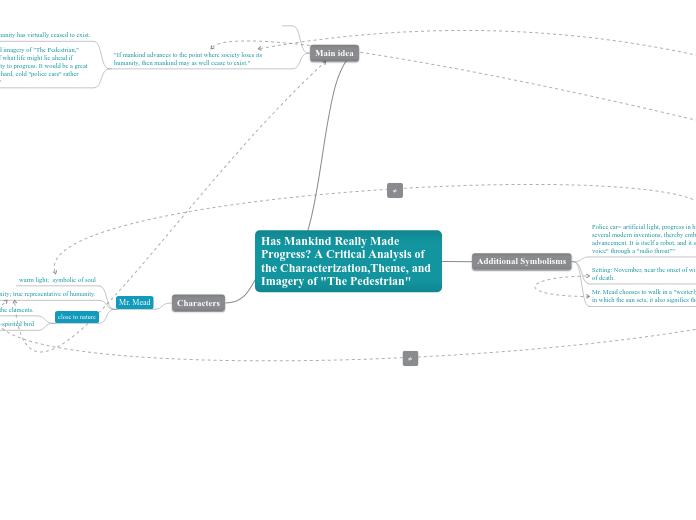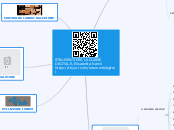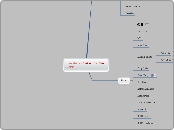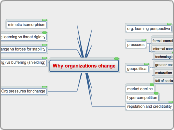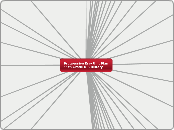Has Mankind Really Made Progress? A Critical Analysis of the Characterization,Theme, and Imagery of "The Pedestrian"
Characters
Mr. Mead
close to nature
"shadow of a hawk" = wild and free-spirited bird
Man is most human when surrounded by the elements.
close to the heart of humanity; true representative of humanity.
warm light; symbolic of soul
Main idea
"If mankind advances to the point where society loses its humanity, then mankind may as well cease to exist."
Through the characterization and imagery of "The Pedestrian," Bradbury has given a warning of what life might lie ahead if mankind relinquishes its humanity to progress. It would be a great loss to watch children grow into hard, cold "police cars" rather than warm, human "Mr. Meads."
Bradbury's world without humanity has virtually ceased to exist.
Additional Symbolisms
Mr. Mead chooses to walk in a "westerly direction," the direction in which the sun sets, it also signifies the coming of death
Setting: November, near the onset of winter, signifying the coming of death.
Police car= artificial light, progress in humanity; "representative of several modern inventions, thereby embodying mankind's advancement. It is itself a robot, and it speaks in a "phonograph voice" through a "radio throat""
"[n]o profession," it is denying the existence of humanity
Progress sees no need for humanity; therefore, the car makes no real effort to relate to Mr. Mead. It just locks him away in the "black jail" of its back seat and takes him away
"nothing soft"= unfeeling progress
